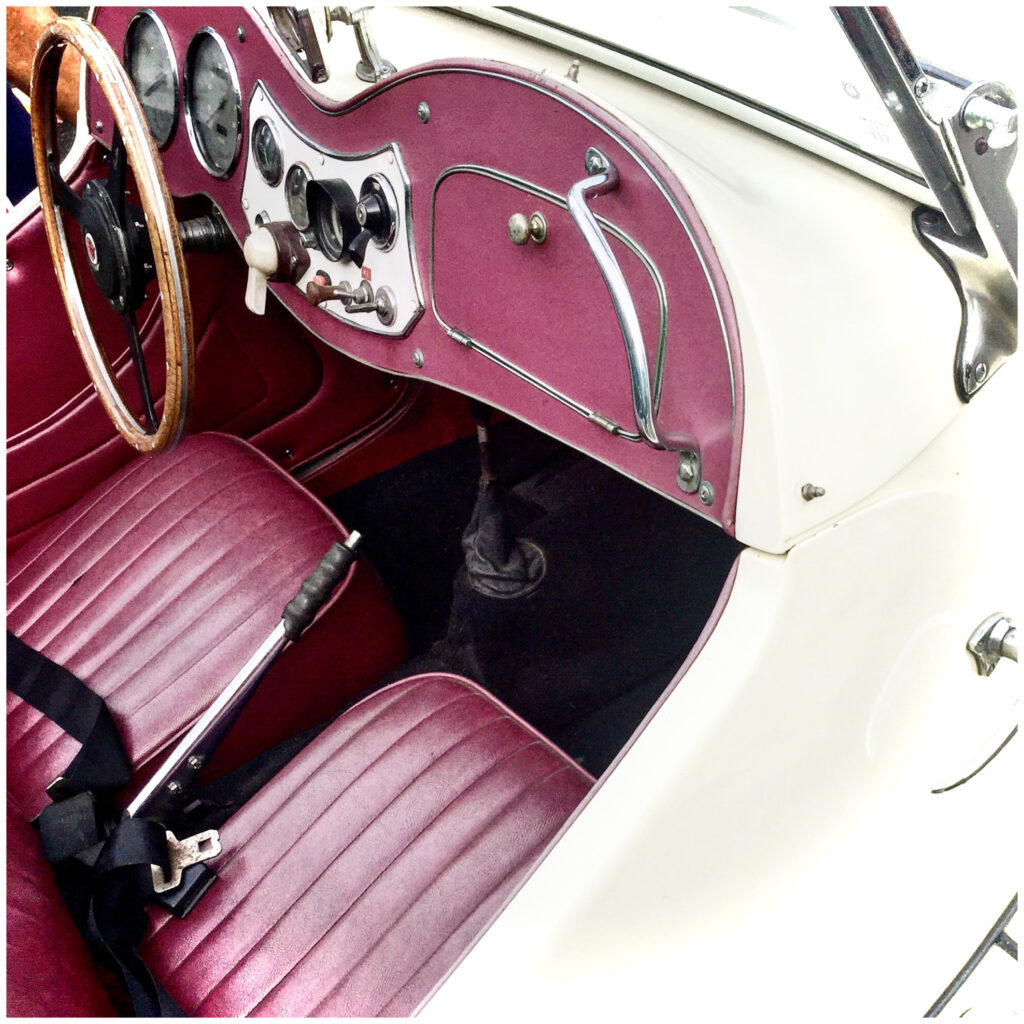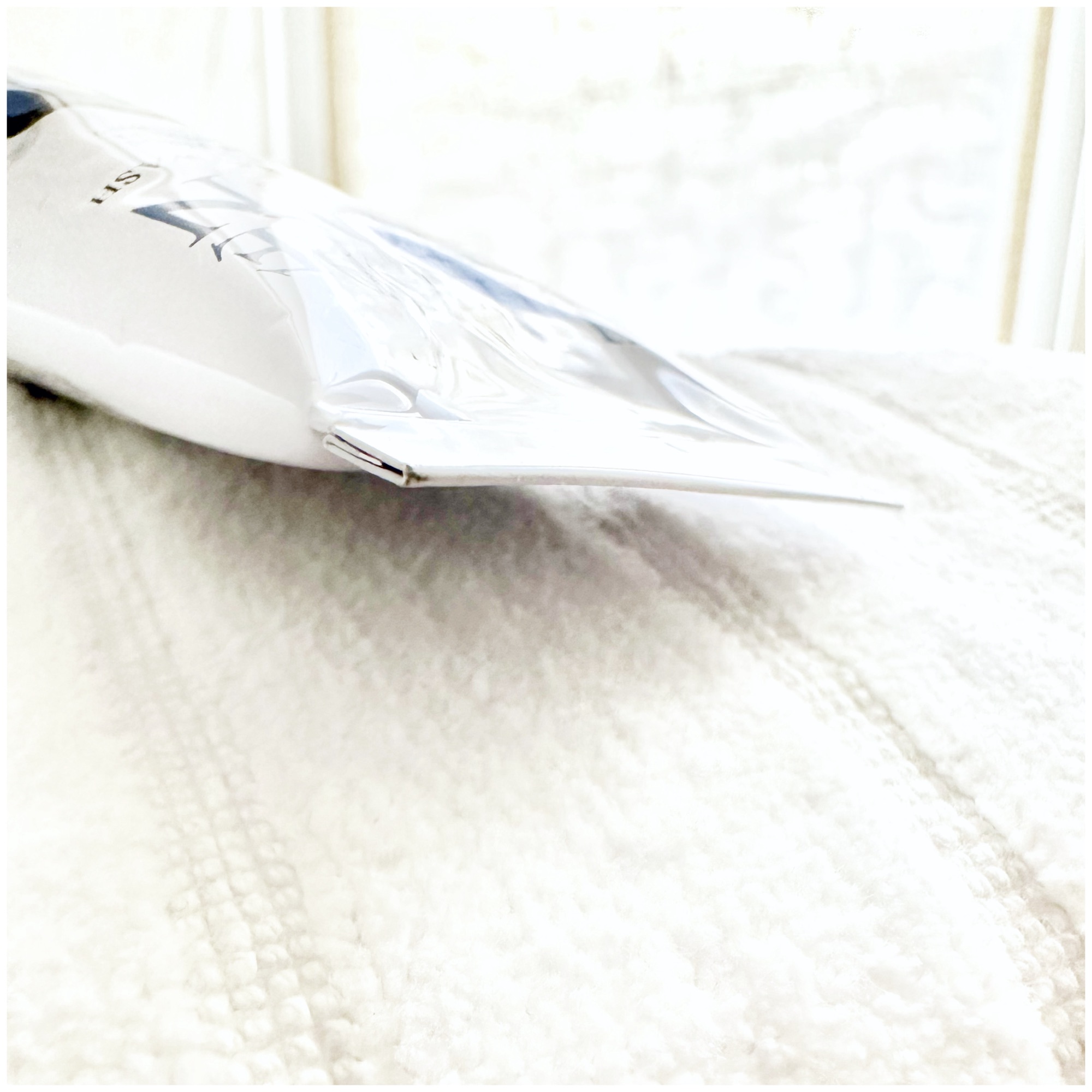Allergen
Car
Yet another thing that won’t fit on your patch test but yet another thing that’s riddled with top contact allergens! Knowing what they are — and, crucially, using your patch test results as a guide — can spare your skin a lot of problems.
Some top contact allergens that are in common cars:
- Rubber (and therefore thiuram and carba mix) in …
- Steering wheel
- Seats
- Rubberized door handles, dashboard buttons and other surfaces
- Many rubber and plastic items contain benzophenones to prevent degradation from light exposure
- Plastic parts might contain contain dyes, paraphenylenediamene (PPD; black) acrylates, disperse blue
- Formaldehyde and other preservatives
- Glues and colophony or rosin
- Metal parts (door handles, buttons, decorative chrome accents) that may contain nickel
- If you use car fresheners or launder car seats, fragrance is always a risk
- If you work on your car, various chemicals can cause allergic or irritant reactions, including antifreeze, solvents, greases, degreasing products, break fluid, fuel, adhesives, epoxy resin, metal cleaners, detergents, lubricants, and oils
There are so many allergens, irritants, and toxic substances to look out for that occupational dermatitis is common in people who work in the auto repair industry.
What other skin problems are possible?
While not contact allergens, these other factors can do a number on your skin (and your contact dermatitis!)
Sun
UVB might not penetrate windshields and windows but UVA certainly can. UVA burns you more slowly than UVB but can cause deeper damage, including photo-aging (wrinkles, loss of elasticity, barrier problems, dark spots and blotches) to skin cancer and immunosuppression.
Heat (and Humidity)
Infrared rays from heat can cause hyperpigmentations and other skin damage. Heat can increase the risk of allergic and irritant reactions.
It’s not just the contact with contact allergens that’s a concern — it is, of course, but so is that contact in hot, humid conditions.
Some of us have to spend lots of hours in a car. If you happen to sweat a lot (some people with hyperhidrosis sweat excessively on the buttocks and behind the thighs or on the back), this means your skin is enclosed in an increasingly hot, humid atmosphere (the seat) with no air circulation for extended periods. This can increase the risk of a contact allergy or worsen existing ones. And not just to the seat itself: if you’re using soaps or lotions with your allergens, this environment could worsen reactions to those, too.
Microbes find this environment ideal, too, increasing the risk of fungal (see sweat “acne” below) problems, warts (viral issues), or bacterial infections (be mindful if you’re dealing with a wound or cyst in that area).
In addition to allergic reactions and irritant contact dermatitis, hyperpigmentations and hypopigmentations, sweat “acne” (Malassezia folliculitis) and other microbial infections on the buttocks, back, and behind the thighs can be an issue due to the hot, humid environment created by sitting in a car seat for extended periods. Bumps and rashes always come with the risk of post-inflammatory hyperpigmentations.
Occupational Dermatitis
In addition to contact dermatitis and irritant contact dermatitis those who work in the auto repair industry are at risk of:
- Hand and nail infections (from cuts, trauma to the nail, or too much wetness).
- Tingling or numbness in the fingers (Raynaud phenomenon) from prolonged exposure to vibrating tools.
- Skin cancer is a risk from regular exposure to some chemicals like waste engine oil or petrol, traumatic burns or chronically inflamed skin affecting the dermal layer of the skin causing an aggressive type of squamous cell carcinoma (Marjolin ulcer), or ultraviolet exposure in arc welding.
- Whitening of the skin (Leukoderma). Unlike vitiligo (an auto-immune disease), leukoderma is caused by melanocytes (the cells responsible for melanin or color production) dying due to exposure to some substances like phenol, which can be found in brake shoes and pads.
- Acneform rashes and folliculitis can occur from exposure to greases and oils.
What can help?
This helps most of us who drive or sit in cars (if you work in the auto repair industry, more tips follow below).
- Get a patch test so you’re not guessing.
- Apply a broad-spectrum sun and light screen daily. Ideally, use one tested specifically for UVB, UVA as well as indoor lights and infrared such as Armada.
- Use shampoo-body wash, conditioner, skincare, and makeup with zero contact allergens and irritants.
- Try using an organic, light-colored or uncolored natural fabric in between your skin and areas of contact (between your hands and the steering wheel or between your back and bottom and the car seat, for example).
- Apply a mineral barrier-protective product like Stay-On-Point! or Armada Baby or Post-Procedure thickly on exposed skin.
- Bathe with allergen-free body wash or soap. Importantly, most VMV Hypoallergenics products also contain coconut-derived monolaurin, a non-allergenic, microbiota-friendly broad-spectrum antimicrobial to help with the wide range of possible infections.
- Before getting dressed, try this great technique for sweat and microbial control: spray the area with Essence Skin-Saving Antiperspirant or Essence Stay Fresh-ener (in the USA) then massage Id Monolaurin Gel or Kid Gloves all over your back and the backs of your thighs and buttocks (take care not to get the products in the internal genital areas). They can be reapplied as needed. TOP TIP: spray Essence Antiperspirant or Stay Fresh-ener again right before bed for better absorption into the sweat pores!
- For barrier repair of irritated skin and microbiome balance, massage Know-It-Oil or Oil’s Well liberally all over your face, hands, and other exposed skin before bed.
If you work in the auto repair industry …
Follow all the above (get lots more in these posts on rubber or lab safety equipment) as well as:
- Do not keep oily or soiled rags in your pockets.
- Wash hands frequently with Essence Skin-Saving Soap, Superwash, or even any of our facial cleansers.
- Use our allergen-free moisturizers liberally on hands every day and even multiple times during the day such as after hand washing.
- For very irritated hands, try this overnight layering intensive moisturization technique: apply moisturizer liberally all over hands. Follow with Know-It-Oil virgin coconut oil then Boo-Boo Balm. Wrap in cling wrap or pure, organic cotton cloth or socks (Cottonique makes some) and leave on overnight.
- When on the job, use protective gloves (make sure they’re of a material and color that you are not sensitive to; your patch test can guide you). Applying a purely mineral, non-comedogenic barrier-protective product like Stay-On-Point! or Armada Baby or Post-Procedure on your hands before putting on gloves may provide further protection from the problematic substances and the gloves themselves.
- Change out of soiled clothes frequently. Ideally, use an allergen-free laundry soap such as Fawn & Lauder or even Superwash!
Subscribe to VMVinSKIN.com and our YouTube channel for more hypoallergenic tips and helpful “skinformation”!
If you have a history of sensitive skin…
…don’t guess! Random trial and error can cause more damage. Ask your dermatologist about a patch test.
To shop our selection of hypoallergenic products, visit vmvhypoallergenics.com. Need help? Ask us in the comments section below, or for more privacy (such as when asking us to customize recommendations for you based on your patch test results) contact us by email, or drop us a private message on Facebook.
For more:
- On the prevalence of skin allergies, see Skin Allergies Are More Common Than Ever.
- For the difference between irritant and allergic reactions, see It’s Complicated: Allergic Versus Irritant Reaction.
- For the difference between food, skin, and other types of reactions: see Skin & Food Allergies Are Not The Same Thing.
- On the differences between hypoallergenic, natural, and organic, check out Is Natural Hypoallergenic? and this video in our YouTube channel.
- To learn about the VH-Rating System and hypoallergenicity: What Is The Validated Hypoallergenic Rating System?
Main References:
Regularly published reports on the most common allergens by the North American Contact Dermatitis Group and European Surveillance System on Contact Allergies (based on over 28,000 patch test results, combined), plus other studies. Remember, we are all individuals — just because an ingredient is not on the most common allergen lists does not mean you cannot be sensitive to it, or that it will not become an allergen. These references, being based on so many patch test results, are a good basis but it is always best to get a patch test yourself.
- DeKoven JG, Silverberg JI, Warshaw EM, Atwater AR, et al. North American Contact Dermatitis Group Patch Test Results: 2017-2018. Dermatitis. 2021 Mar-Apr 01;32(2):111-123.
- DeKoven JG, Warshaw EM, Zug KA, et al. North American Contact Dermatitis Group Patch Test Results: 2015-2016. Dermatitis. 2018 Nov/Dec;29(6):297-309.
- DeKoven JG, Warshaw EM, Belsito DV, et al. North American Contact Dermatitis Group Patch Test Results 2013-2014. Dermatitis. 2017 Jan/Feb;28(1):33-46.
- Warshaw, E.M., Maibach, H.I., Taylor, J.S., et al. North American contact dermatitis group patch test results: 2011-2012. Dermatitis. 2015; 26: 49-59.
- W Uter et al. The European Baseline Series in 10 European Countries, 2005/2006–Results of the European Surveillance System on Contact Allergies (ESSCA). Contact Dermatitis 61 (1), 31-38.7 2009.
- Wetter, DA et al. Results of patch testing to personal care product allergens in a standard series and a supplemental cosmetic series: An analysis of 945 patients from the Mayo Clinic Contact Dermatitis Group, 2000-2007. J Am Acad Dermatol. 2010 Nov;63(5):789-98.
- Warshaw EM, Buonomo M, DeKoven JG, et al. Importance of Supplemental Patch Testing Beyond a Screening Series for Patients With Dermatitis: The North American Contact Dermatitis Group Experience. JAMA Dermatol. 2021 Dec 1;157(12):1456-1465.
- Verallo-Rowell VM. The validated hypoallergenic cosmetics rating system: its 30-year evolution and effect on the prevalence of cosmetic reactions. Dermatitis 2011 Apr; 22(2):80-97.
- Ruby Pawankar et al. World Health Organization. White Book on Allergy 2011-2012 Executive Summary.
- Misery L et al. Sensitive skin in the American population: prevalence, clinical data, and role of the dermatologist. Int J Dermatol. 2011 Aug;50(8):961-7.
- Warshaw EM1, Maibach HI, Taylor JS, Sasseville D, DeKoven JG, Zirwas MJ, Fransway AF, Mathias CG, Zug KA, DeLeo VA, Fowler JF Jr, Marks JG, Pratt MD, Storrs FJ, Belsito DV. North American contact dermatitis group patch test results: 2011-2012.Dermatitis. 2015 Jan-Feb;26(1):49-59.
- Warshaw, E et al. Allergic patch test reactions associated with cosmetics: Retrospective analysis of cross-sectional data from the North American Contact Dermatitis Group, 2001-2004. J AmAcadDermatol 2009;60:23-38.
- Foliaki S et al. Antibiotic use in infancy and symptoms of asthma, rhinoconjunctivitis, and eczema in children 6 and 7 years old: International Study of Asthma and Allergies in Childhood Phase III. J Allergy Clin Immunol. 2009 Nov;124(5):982-9.
- Kei EF et al. Role of the gut microbiota in defining human health. Expert Rev Anti Infect Ther. 2010 Apr; 8(4): 435–454.
- Thavagnanam S et al. A meta-analysis of the association between Caesarean section and childhood asthma. Clin Exp Allergy. 2008;38(4):629–633.
- Marks JG, Belsito DV, DeLeo VA, et al. North American Contact Dermatitis Group patch-test results, 1998 to 2000. Am J Contact Dermat. 2003;14(2):59-62.
- Warshaw EM, Belsito DV, Taylor JS, et al. North American Contact Dermatitis Group patch test results: 2009 to 2010. Dermatitis. 2013;24(2):50-99.
- Verallo-Rowell V. M, Katalbas S.S. & Pangasinan J. P. Natural (Mineral, Vegetable, Coconut, Essential) Oils and Contact Dermatitis. Curr Allergy Asthma Rep 16,51 (2016) . https://doi.org/10.1007/s11882-016-0630-9.
- Park G, Oh DS, Lee MG, Lee CE, Kim YU. 6-Shogaol, an active compound of ginger, alleviates allergic dermatitis-like skin lesions via cytokine inhibition by activating the Nrf2 pathway. Toxicol Appl Pharmacol. 2016 Nov 1;310:51-59. doi: 10.1016/j.taap.2016.08.019. Epub 2016 Aug 22. PMID: 27562088.
- de Groot AC. Monographs in Contact Allergy, Volume II – Fragrances and Essential Oils. Boca Raton, FL: CRC Press Taylor & Francis Group; 2019.
- De Groot AC. Monographs in Contact Allergy Volume I. Non-Fragrance Allergens in Cosmetics (Part I and Part 2). Boca Raton, Fl, USA: CRC Press Taylor and Francis Group, 2018.
- Zhu TH, Suresh R, Warshaw E, et al. The Medical Necessity of Comprehensive Patch Testing. Dermatitis. 2018 May/Jun;29(3):107-111.
Want more great information on contact dermatitis? Check out the American Contact Dermatitis Society, Dermnet New Zealand, the Contact Dermatitis Institute, and your country’s contact dermatitis association.

Laura is our “dew”-good CEO at VMV Hypoallergenics and eldest daughter of VMV’s founding dermatologist-dermatopathologist. She has two children, Madison and Gavin, and works at VMV with her sister CC and husband Juan Pablo (Madison and Gavin frequently volunteer their “usage testing” services). In addition to saving the world’s skin, Laura is passionate about health, inclusion, cultural theory, human rights, happiness, and spreading (like a VMV cream!) goodness!







